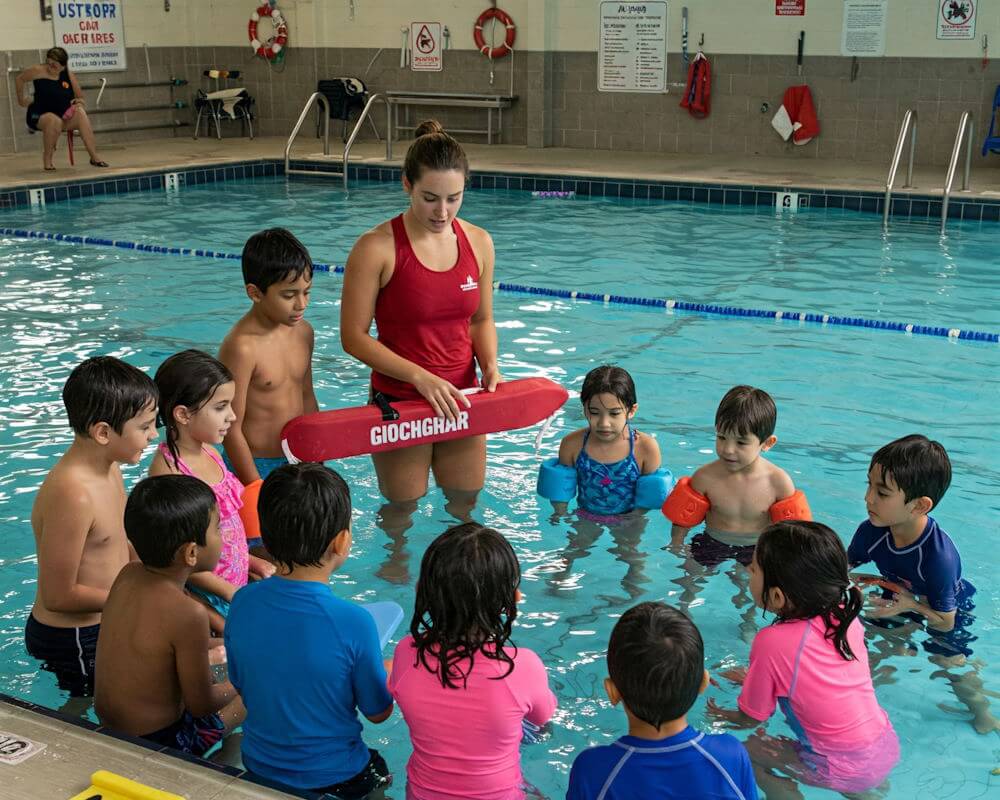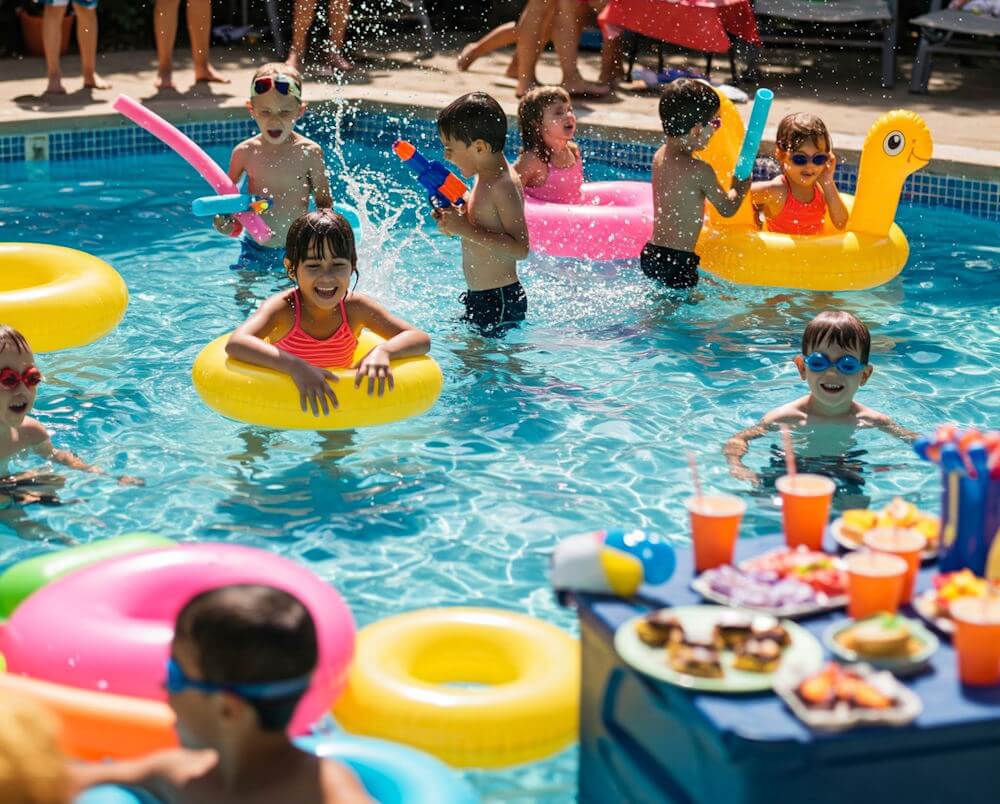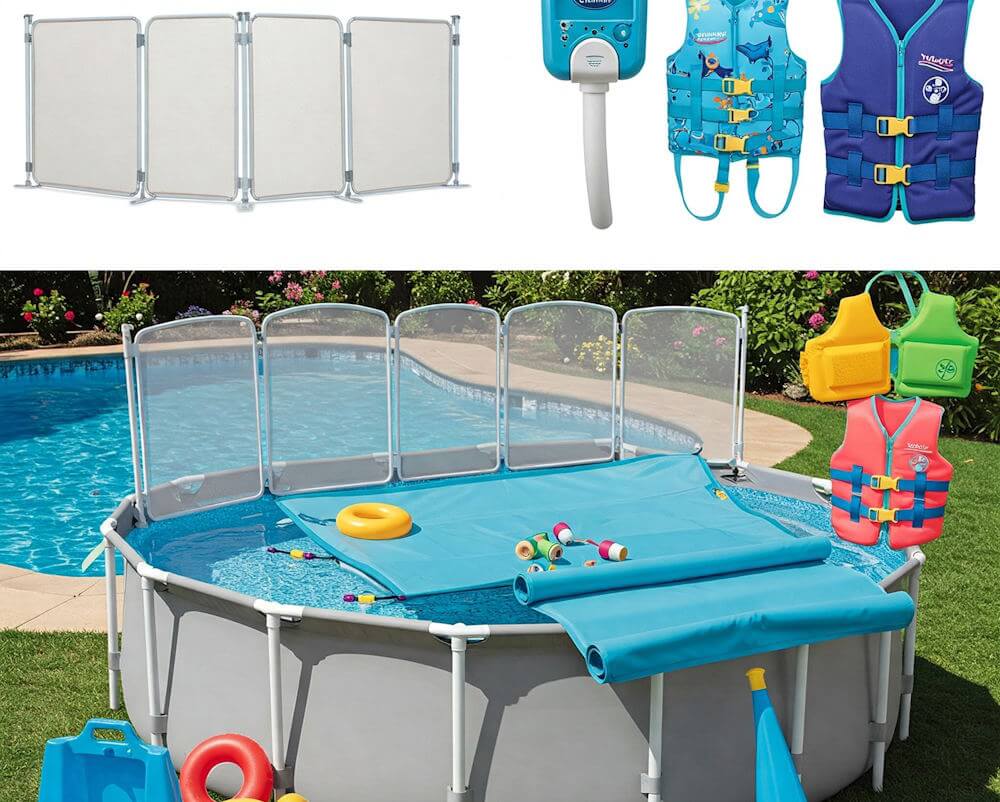Introduction to Pool Safety
Pool safety is an essential consideration for families, especially those with children. Swimming pools, while a source of enjoyment and recreation, can also pose significant risks. Drowning is a leading cause of accidental death among children, and many incidents occur in residential swimming pools. The importance of teaching kids pool safety rules cannot be overstated, as these guidelines can help prevent accidents and ensure a safer swimming environment.
Children are naturally curious and can easily be drawn to the allure of water. This interest can lead to hazards if proper precautions are not taken. It is crucial to establish a framework of pool safety that emphasizes supervision, personal responsibility, and understanding the risks associated with swimming. Educating children about pool safety rules and the inherent dangers of water can empower them to make safer choices and recognize when they are at risk.
This blog post aims to provide a comprehensive guide on teaching kids pool safety rules, focusing on creating an awareness of the various risks involved with swimming pools and introducing practical strategies for educating children. By instilling essential lifesaving skills and promoting an understanding of the environment, children are more likely to adhere to safety protocols. Parents and guardians play an instrumental role in this education process, setting the tone for a culture of safety within the household.
Understanding the importance of pool safety goes beyond acknowledging the potential dangers. It encompasses an ongoing commitment to teaching and reinforcing safe behaviors around water. Through consistent education and vigilance, we can significantly reduce the risks associated with swimming pools and create a safer experience for children. The journey begins with recognizing the importance of integrating safety guidelines into everyday activities related to pool use.
Understanding the Risks
When it comes to pool safety, understanding the inherent risks is crucial for both parents and guardians. Water-related accidents can occur rapidly and often catch children unaware, making it imperative to educate young learners about the dangers they may face. One of the most alarming threats in this environment is drowning. According to the Centers for Disease Control and Prevention (CDC), drowning remains a leading cause of unintentional death for children ages one to four. This statistic underscores the importance of constant supervision and the necessity of teaching children basic water safety rules.
In addition to drowning, slips and falls are common accidents that occur around pools. Wet surfaces can lead to loss of footing, resulting in injuries ranging from minor bruises to more severe consequences. To mitigate this risk, it is vital for guardians to establish designated pathways around the pool area, ensuring that these are regularly maintained and cleared of any obstacles. Parents should also stress the importance of walking, rather than running, around the pool to prevent slips.
Moreover, the potential for entrapment should not be overlooked. Children can become trapped in pool drains or other suction outlets, presenting a serious risk if safety measures are not put in place. Educators and caregivers must emphasize the significance of being aware of surroundings, recognizing potential hazards, and understanding how to orient themselves in case of an emergency. Pool safety education should be holistic, incorporating lessons not just about the physical environment but also about how to respond in the event of an accident.
By fostering awareness of these risks, parents can help children develop a healthy respect for water environments, ultimately reducing the likelihood of accidents and ensuring a safer pool experience.
Basic Pool Safety Rules Every Child Should Know
Ensuring the safety of children around pools is paramount in fostering a secure environment for enjoyment and recreation. It is essential for children to understand basic pool safety rules before engaging in any aquatic activities. One of the most critical rules to instill is the prohibition of running near the pool. Wet surfaces can cause slips and falls, leading to serious injuries. Therefore, children should be reminded consistently to walk carefully around the pool area.
Another fundamental rule is the necessity of adult supervision while swimming. Children should always have a responsible adult present when they are near or in the water. This supervision is vital as it ensures that any potential hazards can be swiftly addressed, and assistance is readily available in case of an emergency. Teaching children to recognize that swimming without an adult is unsafe will promote a habit of seeking help whenever needed.
Diving is an activity that brings excitement, yet it carries inherent risks. Children should be explicitly advised never to dive into shallow water. Diving into shallow pools can lead to severe injuries, including head and spinal cord injuries. Instead, children should be encouraged to enter the water feet first, particularly in unfamiliar environments where depth is uncertain.
Additionally, it is essential to emphasize the importance of not engaging in horseplay around the pool. Roughhousing can lead to accidents, resulting in someone getting hurt. Teaching children to maintain a calm demeanor around the water will contribute to creating a safer swimming experience.
By imparting these basic pool safety rules, parents and guardians can effectively prepare children for safe swimming practices, helping to minimize risks and ensure an enjoyable pool experience.
Engaging Methods to Teach Kids Pool Safety
Teaching children about pool safety requires creativity and engagement to ensure the lessons are memorable and effective. Traditional methods of instruction may not hold their attention, which is why incorporating interactive and playful approaches can enhance the learning experience. One effective strategy is through interactive games tailored to reinforce pool safety rules. For example, a “Pool Safety Bingo” game can be organized, where children mark off safety rules as they learn them. This game not only makes learning fun but also encourages participation and retention of vital information.
Another engaging method is role-playing scenarios, where children can act out different situations related to pool safety. Set up a mock pool environment and allow kids to take on various roles, such as lifeguards, swimmers, or even safety inspectors. This hands-on experience enables them to understand the consequences of unsafe behavior, as they navigate through different roles. Encouragement from peers and instructors during these activities fosters a supportive atmosphere that helps children feel more confident about practicing pool safety.
Additionally, utilizing visual aids plays a crucial role in helping children grasp pool safety rules effectively. Colorful charts depicting safety rules, along with images of safe and unsafe swimming behaviors, can serve as powerful reminders. Creating a pool safety poster with children can also be a collaborative art project that reinforces what they have learned. By encouraging kids to contribute ideas and drawings, they take ownership of the safety message, making it more personal and impactful.
In essence, combining games, role-playing, and visual aids provides diverse methods to engage children in learning about pool safety rules. Such approaches not only enhance their understanding but also promote a culture of safety around swimming, ensuring children are well-equipped to enjoy their time at the pool responsibly.
Incorporating Pool Safety into Family Swim Time
Integrating pool safety discussions into family swim time is essential for fostering a culture of safety among children. Families can utilize swim sessions not only for enjoyment but also as opportunities to reinforce the importance of pool safety rules. One effective method is to incorporate a brief safety talk before heading to the pool. This dialogue can cover essential rules such as never swimming alone, keeping a watchful eye on younger siblings, and understanding the depth of the pool. By making this a regular practice, children learn to associate swimming with safety precautions, thereby making them more likely to adhere to these rules instinctively.
Moreover, during swim time, parents can engage their children in activities that promote safety awareness. For example, parents could organize games that require children to demonstrate rescue techniques or practice safe entry and exit procedures from the pool. By playing games that highlight these skills, kids become more engaged in their learning while having fun. Parents should also encourage children to speak up if they see unsafe behaviors, such as running near the pool or not using flotation devices properly. This empowers kids to take responsibility for their own safety as well as that of their peers.
Consistency is key in developing lifelong safety habits. Regularly revisiting pool rules during family swim days can help reinforce these messages. Establishing a ritual, such as a safety countdown before entering the water, could serve as a mnemonic device for children. This practice not only enhances their understanding but also makes pool safety an integral part of the swimming experience. Ultimately, by embedding discussions about pool safety into family swim time, parents create an environment that values safety, ensuring that children can enjoy their aquatic experiences with confidence and security.
Teaching Water Survival Skills
Instilling water survival skills in children is an essential aspect of ensuring their safety around pools and other bodies of water. These skills not only help children understand how to react in emergencies but also provide them with the confidence needed to enjoy aquatic activities safely. Among the fundamental water survival skills are floating, treading water, and reaching for the side of the pool. Each of these skills plays a critical role in enhancing pool safety.
Floating is a vital skill for children to master. In situations where they might find themselves in deep water unexpectedly, being able to float on their back allows them to conserve energy while waiting for help. Floating teaches children the importance of remaining calm, which is essential during panic-inducing moments. It is worth noting that floating can be easily taught using a few supportive aids, such as pool noodles or floating devices, ensuring that children feel secure while practicing.
Treading water is another crucial survival skill that helps children stay afloat in deeper water without the need for assistance. This skill is beneficial in a variety of situations, allowing children to maintain their position while signaling for help when needed. Treading water involves a simple motion of moving the arms and legs, which can be reinforced through regular practice and fun exercises in the pool. Encouraging children to practice treading in a controlled environment can enhance their water confidence significantly.
Additionally, teaching children to reach for the side of the pool when they begin to feel overwhelmed can provide them with a safe escape route. This skill emphasizes the importance of knowing one’s surroundings and the quickest way to safety in case of distress. By incorporating these essential water survival skills into pool safety education, caregivers can better equip children to handle potential risks and enjoy their time in the water with greater assurance.
The Role of Supervision in Pool Safety
One of the most significant factors contributing to pool safety is adult supervision. Proper oversight can greatly reduce the risk of accidents and drownings, making it an essential component of pool safety protocols. Parents and guardians must remain vigilant while children are in and around the pool, ensuring that they are continually within sight and safe at all times.
Effective supervision means more than just being nearby; it involves being actively engaged with the children. Adults should position themselves at a vantage point where they can clearly see all areas of the pool. This way, they can quickly identify any unsafe behaviors, such as running near the pool’s edge or engaging in risky play. It is essential for caregivers to eliminate distractions while supervising, such as using mobile devices, engaging in deep conversations, or consuming alcohol. A focused and attentive supervisor is more likely to respond quickly in the event of an emergency.
Establishing specific rules about swimming and behavior in and around the pool can enhance the effectiveness of adult supervision. Parents should communicate clear safety guidelines to children, such as not diving in shallow water, waiting for adult approval before entering, and adhering to designated swimming times. Encouraging children to inform an adult if they notice unsafe behavior is also crucial, as it promotes a culture of safety among young swimmers.
Moreover, it is vital for supervising adults to be knowledgeable about swimming and water safety practices. Understanding basic life-saving techniques, such as CPR, and having access to appropriate flotation devices can prepare them to act effectively in emergencies. In summary, adult supervision must be proactive, focused, and informed, consistently prioritizing the safety of children enjoying recreational activities in and around the pool.
The Importance of Pool Safety Equipment
Ensuring a safe swimming environment is paramount for any pool facility, whether private or public. One of the most critical aspects of pool safety is the availability and proper usage of safety equipment. Various tools can significantly aid in preventing accidents and improving the overall safety for swimmers, particularly children who may be more susceptible to mishaps. The integration of essential pool safety equipment contributes to a proactive approach in safeguarding lives and minimizing risks associated with swimming activities.
Life jackets are among the most important safety devices. These buoyancy aids are designed to keep individuals afloat and can be particularly beneficial for inexperienced swimmers or those with limited swimming skills. By requiring children to wear life jackets when in the vicinity of a pool, parents and guardians can enhance safety significantly. It is essential to choose Coast Guard-approved life jackets that fit correctly to maximize their effectiveness.
In addition to life jackets, rescue poles are indispensable tools in emergency situations. These long poles, often fitted with a life ring or flotation device, can be used to reach a struggling swimmer without putting the rescuer in harm’s way. Positioning rescue poles at strategic locations around the pool ensures that they are readily accessible when needed. Swim facilities should also have a well-stocked first aid kit on-site, containing necessary supplies for addressing minor injuries or incidents that may occur.
Flotation devices, such as swim rings or noodles, can also serve as valuable safety equipment. While they are often used for recreational purposes, these devices provide additional support for children as they build swimming skills. It is vital, however, to remember that flotation devices do not replace adult supervision; they should be used as a supplementary safety measure. By incorporating these essential safety tools, pool owners can foster a safer swimming environment, contributing to a culture of responsibility and awareness around pool safety.
Conclusion: Making Pool Safety a Priority
In summary, the significance of pool safety cannot be overstated, particularly when it comes to our children. With the allure of water play often overwhelming the vigilance required to ensure safety, it becomes imperative for parents, guardians, and community members to prioritize safety around swimming pools. By implementing and adhering to the various safety rules discussed throughout this guide, the risk of accidents can be significantly mitigated. Key points include active supervision, where an adult must always be present when children are around water, and teaching kids basic swimming skills, which serves as an essential foundation for their confidence in the water.
Additionally, creating an environment that promotes safety is fundamental. This can be accomplished through the use of barriers, such as pool fences and gates, along with pool alarms that alert you when someone enters the pool area unsupervised. Furthermore, emphasizing the importance of never running near the pool and the necessity for appropriate pool attire will instill lifelong habits in children that contribute to a safer swimming experience. Regular discussions about the potential dangers of swimming, including the importance of not engaging in risky behaviors, will further foster an understanding of aquatic safety.
It is also vital to engage in regular water safety training for both children and adults. Educating everyone on CPR and first aid can be life-saving, equipping them with the skills needed to act in emergencies. Make it a community effort by organizing safety workshops or swimming classes, which can also provide children with the opportunity to learn from experienced instructors. Ultimately, by cultivating a culture of safety around swimming pools, we can ensure that children enjoy water activities while minimizing risks associated with drowning and accidents.



